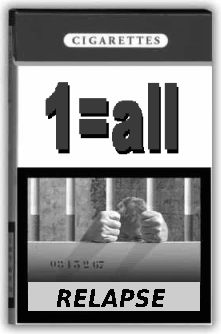One of two things happens following relapse. The user will think they have gotten away with using and, as a result, with the passage of time a "false sense of confidence" will have them using again. Or, they'll quickly find themselves back using nicotine at their old level of daily intake or higher.
Although it sounds strange, as Joel notes, the lucky ones are those who quickly find themselves once again fully hooked.[1]
Why? Because this group stands a far better chance of associating that first puff, dip or chew of nicotine with full and complete relapse.
Instead of learning the Law of Addiction from some book such as this, they stand a chance of self-discovering the law through experience and the school-of-hard-knocks.
It's a lesson that's become increasingly difficult to self-discover since 1984 when the FDA approved the first of a now vast array of nicotine replacement products (NRT), the nicotine gum.
Today, the lesson that just one hit of nicotine spells relapse gets muddied and buried by promotion and marketing associated with ineffective nicotine weaning schemes.
Those standing to profit from the sale of NRT have re-labeled a natural poison medicine. They teach that instead of ending nicotine's use that you need to replace it, and describe doing so as "therapy."
Today, the e-cig industry stands on NRT's shoulders in proclaiming nicotine safe, and that vaping it, while blended in a thousand flavors, is vastly more desirable than chewing or sucking it, or wearing a tasteless patch.

It's why teaching and sharing the "Law of Addiction" with those still in bondage is the most important gift we can give.
Pre-NRT and e-cig generations enjoyed clean mental chalkboards upon which to record prior relapse experiences. Today the chalkboards of hundreds of millions of addicts are so filled with conflicting messages that identifying truth has become nearly impossible.
This generation needs us. They need our insights.
References:
All rights reserved
Published in the USA
